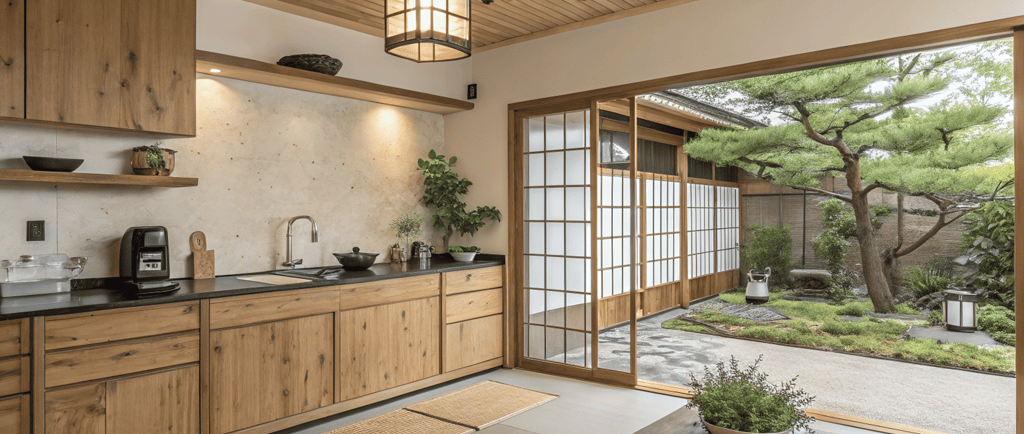Indoor-Outdoor Living: Making Your Home More Comfortable and Stylish


The Essence of Indoor-Outdoor Living
The concept of indoor-outdoor living has gained significant traction in modern home design, reflecting a broader lifestyle shift towards harmonizing our interior spaces with the natural world outside. This design philosophy promotes a seamless transition between indoor and outdoor environments, merging the comfort of a well-appointed home with the refreshing qualities of nature. A strong emphasis on this synergy inspires homeowners to create spaces that not only enhance aesthetic appeal but also enrich the overall living experience.
One of the primary advantages of integrating indoor and outdoor spaces is the influx of natural light, which plays a vital role in enhancing well-being. By strategically placing large windows, sliding glass doors, or even open floor plans, homeowners can flood their interiors with sunlight, fostering a bright and welcoming atmosphere. The natural light not only beautifies the space but also positively impacts mental health, promoting an uplifting environment for residents.
Furthermore, increased ventilation is another crucial benefit of this lifestyle. By inviting outdoor breezes into the home, indoor-outdoor living optimizes air circulation, creating a fresh and invigorating atmosphere. This airflow reduces reliance on artificial cooling systems, thus promoting energy efficiency and lowering utility expenses. It is undeniably a win-win situation—enjoying the outdoor climate while simultaneously preserving the eco-friendliness of the home.
Additionally, homes that successfully integrate indoor and outdoor areas often showcase stunning design elements such as patios, decks, or landscaped gardens that blur the boundaries between these two realms. Many contemporary homes feature large folding or sliding doors that open up to welcoming outdoor spaces, allowing for gatherings and relaxed living experiences. Such designs invite nature indoors, encouraging a connection that fosters relaxation and tranquility in the everyday hustle of life.
Design Ideas for Blending Spaces
Transforming your home into a seamless integration of indoor and outdoor living requires thoughtful design considerations that effectively merge these two realms. One of the most impactful architectural features to incorporate is large glass doors. These expansive glass panels serve not only as a physical connection between the indoors and outdoors but also flood both areas with natural light. This eliminates the traditional boundaries, creating a sense of flow and spaciousness that enhances the overall ambiance.
Open-air patios epitomize the concept of blending spaces, offering practical extensions of the home that can be used for relaxation, entertainment, or dining. By designing a patio that is directly accessible from the indoor living area, homeowners can create inviting spaces that accommodate various activities. Furnishing these patio areas with weather-resistant materials ensures longevity and comfort, making it an appealing space that can be enjoyed throughout the year.
When it comes to furniture and decor, it is essential to select items that complement both indoor and outdoor settings. Comfortable seating options, such as plush outdoor sofas and chaise lounges, can enhance the inviting nature of your space. Opt for cohesive color schemes that echo the natural surroundings while maintaining harmony with your interior decor. Textures and materials such as rattan, teak, or soft fabrics can bridge the aesthetic gap between the two environments, creating a unified look that feels intentional.
Incorporating features like outdoor dining areas or fire pits can also encourage family gatherings and socialization in a blended environment. Ultimately, the key to creating a successful indoor-outdoor living space lies in thoughtful design that emphasizes continuity while remaining functional and stylish.
Landscaping and Outdoor Elements
Creating an inviting indoor-outdoor living experience requires thoughtful landscaping and the incorporation of outdoor elements that harmonize with the home's architecture. A well-designed landscape not only enhances the aesthetic appeal but also improves the functionality of the space, providing areas for relaxation and entertainment. One of the key landscaping techniques involves layering various plant selections. Utilizing a mix of shrubs, perennials, and ornamental grasses can create a dynamic visual effect while ensuring seasonal interest throughout the year.
When selecting plants, it is essential to consider factors such as climate suitability, maintenance requirements, and overall design intent. Native plants are particularly advantageous, as they are adapted to local conditions and require less water and care, promoting sustainability in outdoor living spaces. Additionally, incorporating hardscaping elements, such as pathways and patios constructed from natural materials like stone or wood, can create seamless transitions between indoor and outdoor areas. These features help to enhance the overall flow of the home and encourage outdoor enjoyment.
Incorporating functional elements such as water features, fire pits, and outdoor kitchens can significantly transform an outdoor area into a vibrant living space. Water elements, like ponds or fountains, create soothing sounds and promote a sense of tranquility, while fire pits offer warmth and a gathering point for family and friends. Outdoor kitchens elevate the cooking experience, allowing for alfresco dining and entertaining, further blending the indoor and outdoor lifestyles.
Planning for year-round enjoyment is paramount in landscaping design. By selecting plants that provide winter interest and using structures like pergolas or shade sails, homeowners can ensure their outdoor spaces are inviting in every season. It is also important to consider maintenance aspects, ensuring that the landscaping design remains manageable while sustaining its beauty over time. Thoughtful landscaping, equipped with outdoor elements, creates a harmonious environment that promotes both comfort and style in indoor-outdoor living.
Creating Comfort and Style: Key Tips and Considerations
Creating a harmonious indoor-outdoor living space requires careful consideration of various elements, as this amalgamation serves both functional and aesthetic purposes. To achieve a seamless transition between your home and outdoor areas, selecting appropriate textiles is paramount. Fabrics such as acrylic and polyester are particularly beneficial because they exhibit both durability and resistance to fading. These materials not only enhance the overall aesthetic but also withstand outdoor conditions, ensuring longevity and comfort.
When it comes to furnishings, investing in weather-resistant furniture is crucial. Opt for pieces made from materials like aluminum, teak, or synthetic resin, which can endure the elements while providing a stylish touch. Functionality should coexist with design; for instance, modular or stackable furniture offers adaptability across different setups and a compact solution for smaller spaces, maintaining an uncluttered appearance.
Lighting plays an instrumental role in crafting the desired ambiance for both indoor and outdoor areas. Consider incorporating layered lighting options such as string lights, lanterns, and wall sconces to define spaces and create warmth. A thoughtfully designed lighting arrangement not only highlights features but also enhances the overall atmosphere, making it inviting for evening gatherings or relaxation.
Moreover, addressing functional aspects like climate control and privacy solutions is essential for maximizing comfort. Installation of outdoor fans or heaters can help regulate temperatures, ensuring comfort in varying weather conditions. For privacy, consider using natural screens such as bamboo or ornamental grasses, or even installed outdoor curtains, which can provide seclusion while augmenting the relaxing vibe.
By thoughtfully selecting textiles, furniture, lighting, and practical features, homeowners can achieve stylish and comfortable indoor-outdoor spaces that reflect their personal taste while fostering an inviting environment for both family and guests.





